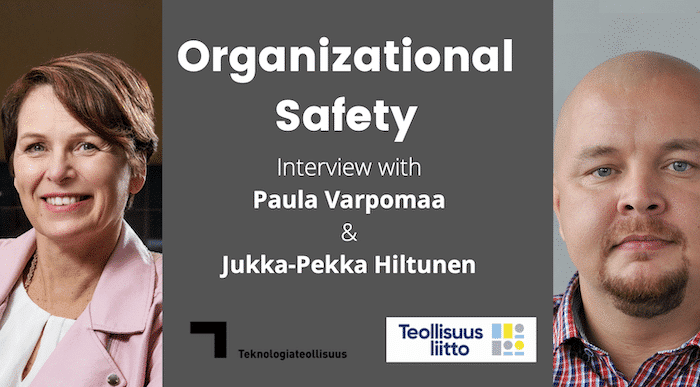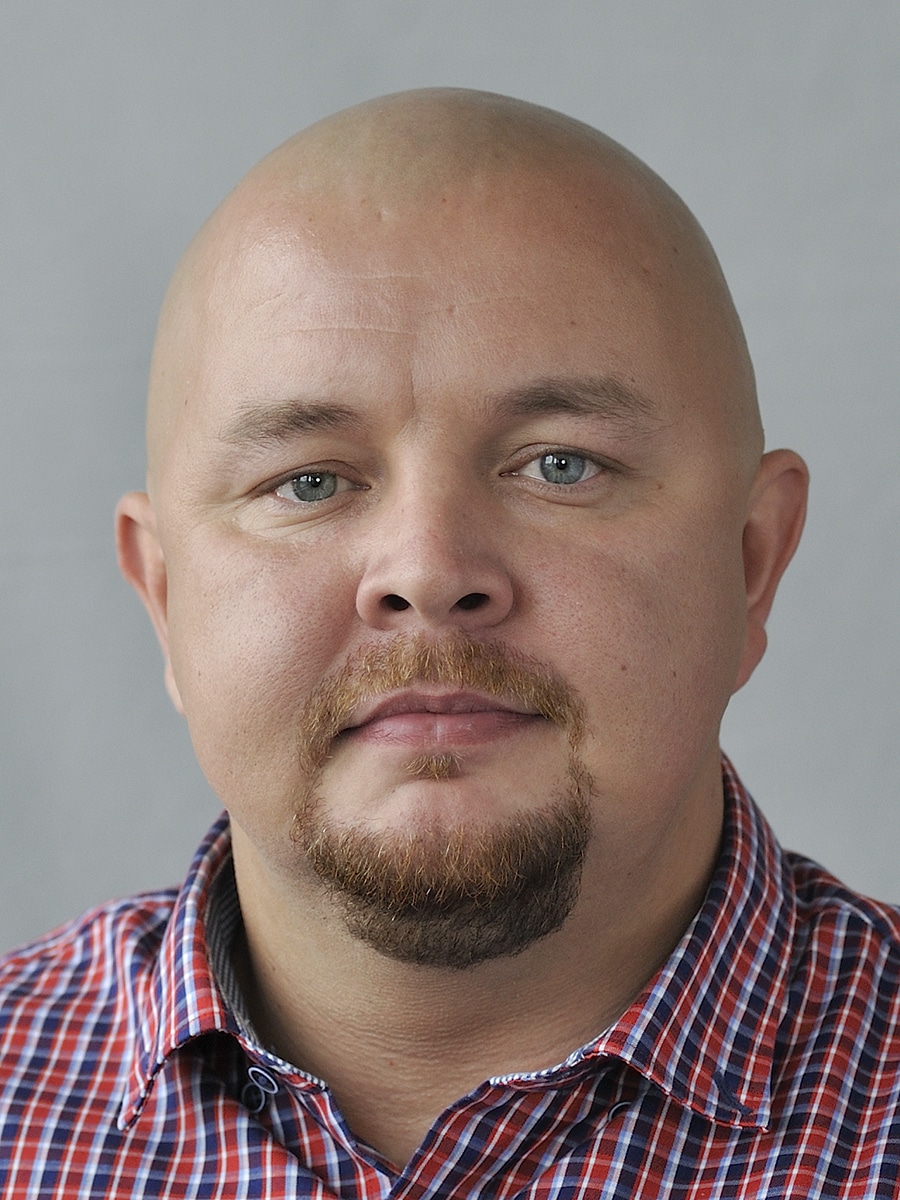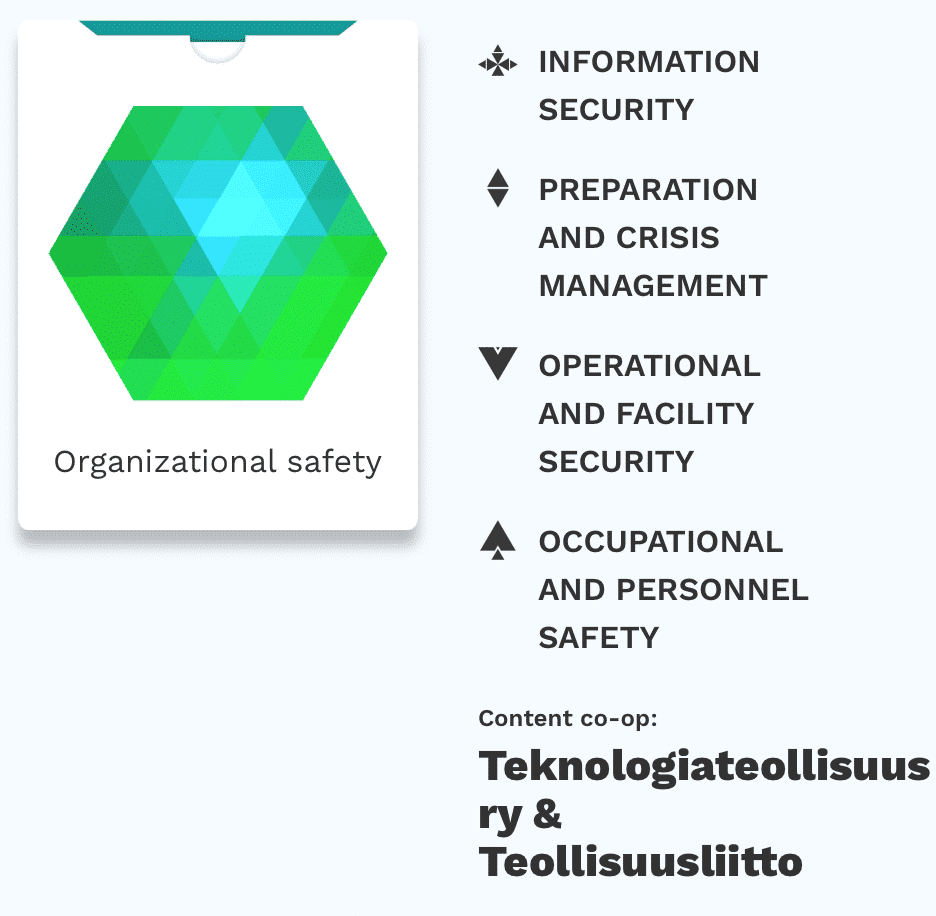Organizational Safety, in an interview with Paula Varpomaa and Jukka-Pekka Hiltunen

In this interview, Paula Varpomaa, Employment Industry Expert and Project Manager at the Technology Industries of Finland, and Jukka-Pekka Hiltunen, a contract expert at the Industrial Union of Finland, share their thoughts on corporate security and the new Organizational Safety deck.
Who are you and what do you want to promote professionally?
Paula: I am an employment specialist and project manager in an SME well-being project. I want to promote the well-being of Finnish companies, one part of which is safety issues from a broader perspective – in other words, safety does not mean only occupational safety.
In general, I want to promote a smooth everyday life and good leadership in my work, which I find inclusive and empowering people – I believe there is more together. Everyday life is smooth when processes, safety issues, and the work environment are in order, and the work community is functional and management is good. In that case, we are productive and we all have a good time, both the company and the staff. And when it comes to safety – it’s everyone’s thing that looks a little different to management and employees.

JP: I am a contract specialist and my job is to improve the working conditions of employees. Promoting them is one thing I want to take forward. Another thing I want to do is promote interaction at the workplace level. I think that is extremely important and we should invest a lot. One has to be honest and realistic in that the interaction seems to be a bit of a challenge, the discussions that should be held in the workplace are not held and this causes more division and differences of opinion than it should.
Thoughts on the Topaasia – Organizational Safety project and development work?
JP: I think projects like the one we’re working on now have the potential to help improve interaction in the workplace. The aim is to foster good relations with employers as well so that such projects can be taken forward in good consensus and joint action strengthened. Through these, good is achieved.
Paula: Yes. Often, development work involves learning a systematic way to put things right, and this is reflected in the many other processes around you. For example, security development projects like this are not just about putting the security process in order, but the production process can also evolve – do sensible things and move things forward on a wider front.
JP: That’s right. If there happen to be some problem areas in the workplace that are hard to talk about, it’s a good idea to try to look at different angles of approach and that’s what this project and this game are about to promote. Such an approach may make it easier to raise new issues in the future.

Paula: Yes. The game has a theme that is common to everyone and everyone has an opinion about it, and the game teaches a culture of conversation at this point. Through the game, it can become apparent that things look different to management and employees, and this is not a disadvantage when the perspectives are brought to the table for discussion together. It is noticed that one speaks of the fence, the other of the fence’s spearhead, and sometimes it is noticed that the same thing is talked about in different terms. All of this adds to a common understanding.
What is Organizational Safety?
JP: From an employee’s perspective, the idea can easily go into talking about corporate espionage and this level of security. It should be understood that this is the sum of many things, a larger whole that bundles several things, such as personnel safety. This should be highlighted.
Paula: Sure, the law controls a lot of occupational safety, but from the company’s point of view, there is much more to corporate safety. Even if it is a wonderful and clean physical work environment, but the processes or issues related to information security are mixed up, the whole thing is weak from the point of view of corporate security. Organizational Safety is the sum of many things, where it is not enough to put one thing in top condition so that at the same time the next thing is in full swing. For example, information security is one of the competencies that come with every employee today. In general, the areas related to corporate security and employees are expanding.
JP: Here comes the idea of this project and game of being able to break a big cake into small parts and the small parts into a big whole.
Why did we make this deck?
JP: The idea is to increase understanding in the workplace of what Organizational Safety is. We wanted to develop an easy way to discuss the topic so that the workplace would not have to come up with these topics from scratch. Sure, there are other ways to take the topic forward, but I think this is an easy way to handle even unexpected perspectives when the game offers different perspectives. I think the game is a really good and easy-to-use tool that will definitely help in the workplace on the topic of discussion.

Paula: We wanted to make an inclusive approach that creates an opportunity to discuss and create a common understanding of Organizational Safety so that we reach a concrete level. That is, the discussions are not left to the high cloud vision talk. As an easy-to-use tool, I think this would be a great tool for the annual safety management clock to use every year. This would lead to different areas of development each year and strengthen the rooting of the importance of security. The game is also a different, modern, and non-place way to deal with these things.
In Finland, the direct cost of accidents is 650 million per year, and there are not even any indirect costs accounted for this number. It’s great if you can get even a small amount out of this.
JP: That’s right. One would not always approach the subject in the same way, holding a meeting and dealing with the top post after which nothing changes. I think this tool will have a different approach and a different approach and that is a good thing.
Paula: Yes. When you get the card in front, you have to form an opinion about it and say something out loud. This is a different approach than having someone go around desks and ask people for their opinions, in which case they might not even find the right words. It’s a different matter when you get ready to make a statement and form an opinion about it. I think this will help us Finns to discuss.
For what situations and for whom is this deck intended?
Paula: We’ve targeted this for SMEs, but I think the game is just as good for big ones as it is for small ones. This can be used by management with each other, middle management with each other, employees with each other or in mixed groups, and it doesn’t hurt even if everyone interprets the cards in their own way. I would tie the use to a systematic thing that happens at least once a year.

Sample cards from the Organizational Safety deck
One use situation can be found, for example, with a subcontractor in a situation where a big customer says “You are not our subcontractor if there is no safety management standard”. In a situation like this, the game is a good tool to implement the topic. Standard certificate doesn’t do much on the wall if you really don’t act in it’s way.
JP: I would see the game as a tool with such a low threshold that this can be played by both company management and employees. In my opinion, use should not be tied to any particular size class of the company. Of course, when going to a bigger company, you have to think about how and who will use the tool, for example, by department.
Paula: The usage situation could also be found in the meetings of the Occupational Safety and Health Committee, when accident statistics and things like this are considered anyway. These are usually moments where you are thinking about what to do now to get to the smaller numbers and the tool can help you find new perspectives. In any case, security issues are those that need to be repeated, repeated, repeated and never completed.
JP: That’s right. This is the kind of sparrer that helps keep the Organizational Safety theme on the frame.

